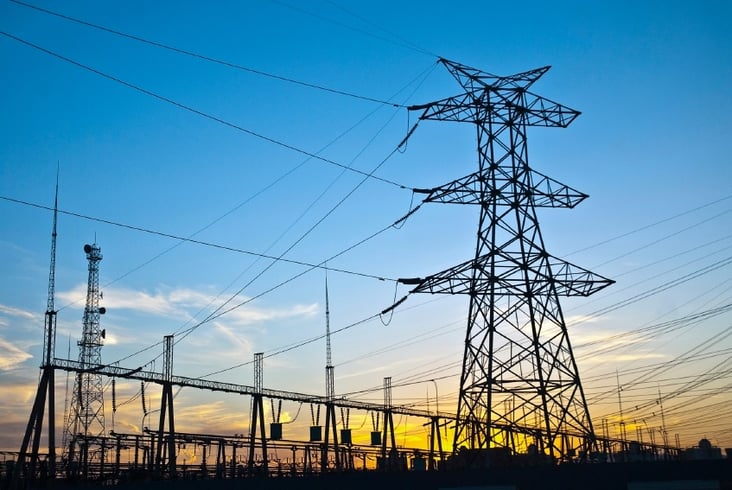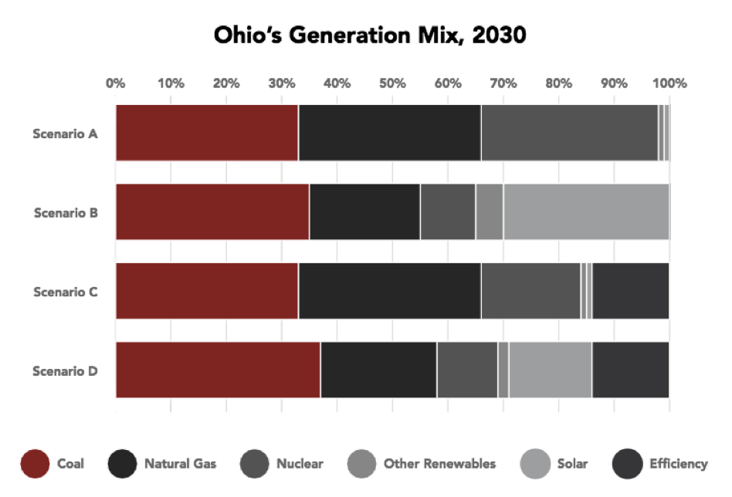
Ohio’s electricity system is at a crossroads. The freeze of the renewable portfolio standard (RPS) and the energy efficiency resource standard (EERS) implemented by SB310 in 2014 will be lifted on January 1, 2017. Over the last two years, policy uncertainty has undermined investment in Ohio’s advanced energy industry. Meanwhile, utilities are warning of closures to uneconomic plants, which would leave customers exposed to reliability issues and rate hikes. To provide a data-driven perspective on Ohio’s energy challenges, AEE Institute has published a report assessing four possible scenarios for meeting the state’s energy needs and ensuring reliability. This analysis, which is based on the use of AEE Institute’s modeling tool, shows that Ohio can chart a long-term energy strategy that promotes affordable and reliable power by taking advantage of cost-competitive advanced energy technologies, while also benefiting the state’s economy.
The study, “Four Paths to Ohio’s Energy Future: Modeling Options for Meeting Electric Power Needs in 2030,” examines the results of four modeling scenarios representing potential policy pathways for Ohio’s energy future. Using publicly available data from the state’s investor-owned utilities’ (IOUs) planning documents, the model determines rate impacts of these policy scenarios.
For each scenario, the model identifies the combination of generation sources, efficiency improvements, and other measures that represent the lowest-cost means of meeting Ohio’s future energy needs. The model also factors in assumptions based on the current and future price of natural gas, current policy barriers stalling investments in advanced energy, pending federal regulations with which the state may need to comply, and the retirement of aging coal facilities.
The report projects rate impacts of the following four scenarios, all through 2030.
The base case, Scenario A, or “business-as-usual” approach, is the highest-cost of the four scenarios tested by the model. The result of this scenario, which projects no investment in renewable energy or energy efficiency between now and 2030, would increase rates by 2.83 cents/kWh – pushing electricity rates in Ohio up to 12.45 cents/kWh from the current price of 9.62 cents/ kWh.
In Scenario B, the model allows renewable energy development to compete with other generation resources, while still excluding energy efficiency investments. The result of this scenario is a small rate reduction of 0.08 cents/kWh in 2030 compared to Scenario A.
In Scenario C, investment in energy efficiency is allowed to compete with traditional generation sources, while excluding investment in renewable energy. This would lead to a rate reduction of 1.71 cents/kWh – a savings of nearly 2 cents per kWh compared to Scenario A.
In Scenario D, the model allows for both renewable energy and energy efficiency to compete with traditional generation resources, leading to a savings of 1.69 cents/kWh compared to the base case. The savings are nearly the same as the efficiency-only Scenario C, while the addition of renewable energy would also provide some protection against volatility in natural gas prices.

The Four Paths report shows that maintaining business-as-usual and failing to deploy advanced energy technologies like renewable energy and energy efficiency would be the highest-cost path for Ohio. By contrast, policy measures that ensure that advanced energy technologies like renewable energy and energy efficiency get to compete would diversify Ohio’s energy sources and provide protection against fuel price volatility, all while saving consumers money.
Ohio’s need for innovative advanced energy technology is more important than ever as the state faces long-term decisions regarding its energy future. When developing the state’s energy strategy, policymakers should consider the cost and investment benefits of a diverse energy portfolio that includes renewable energy, energy efficiency, and natural gas generation. By using data to understand the consequences of different policy choices, Ohio policymakers can steer a course toward an energy future of secure, clean, affordable energy.